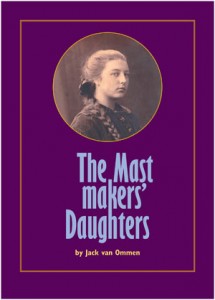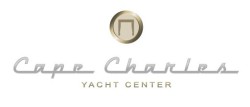One of the most moving memories our mother writes in “The Mastmakers’ Daughters” is about her short friendship with Boukje van Putten.
This week I connected with her family members when one of them, John de Vries, posted an old photograph of Boukje with her father in this car in front of the blacksmith shop, with her family members in the background. Note Boukje’s wooden shoes in front of the car. My guess is that she is about in 4th grade in this photograph. It is possible that this might be the same automobile my grandfather was involved with in this story. Our mother and Boukje were in the same elementary school grades. John de Vries posted this in a Facebook Group about People from “De Lemmer” in Friesland, with memories of the 20th century.
Chapter 13 Schoolmaster Funcke
My first day of school! Pa took me. I wore a brown velvet coat with a matching beret, lined with blue flannel. Moe had sewed it herself, of course. We stopped on our way to pick up my neighbor friend, Boukje, at the home and blacksmith shop of van Putten. Her dad gave my Pa a note to bring to school. I learned later that this was a so called “small pox notice”.
Van Putten was in my eyes, a genius. He had so many skills. He could have become a very rich man. He could play the organ and tune it as well. He was the only photographer in town. He did not have a studio, so he took the pictures in his back yard, on the lawn. He’d hang a screen on which some Pastoral scene was depicted as a backdrop. There was a table and chairs where the subjects sat and where they would lay their hands on the table and then van Putten would memorialize his subjects with the click of the shutter.
He also had the very first taxi service in town. Pa had to go with van Putten to buy his first automobile in Arnhem. He helped with the purchase negotiation and Pa put up the money. Van Putten was the first to have a radio in our town.
Boukje around 1911 with her dad in, what is possible the first taxi. (foto: from John de Vries, great-grandson of Cornelis Tjepke van Putten)
Boukje became one of my closest friends. She had an older brother who would lend us his color crayons.Drawing with crayons was our passion. Boukje’s aunt, who lived with them, had a subscription to “De Gracieuse” a fashion magazine. The pictures fascinated us and we attempted to draw these figures from a magical world so far away from the Polderdijk.
Jan and Pa had been to Amsterdam but Kampen, Urk and Heeg were as far as I had ever ventured.
Boukje’s grandfather and another aunt shared the two rooms with the van Putten family behind his black smith shop. My friendship with Boukje, was also shared at times with another girl and lasted for a long time. Boukje developed diphtheria, but the family did not want a doctor because then a notice would be posted on their door: “Contagious disease….” and that would scare potential customers away. At that same time, we had scarlet fever and diphtheria in our clan. The doctor restricted us to a salt free diet because otherwise we could develop kidney problems. Boukje died, at age twenty-eight, of a kidney infection.
Hoofdstuk 13 Meester Funcke
De eerste schooldag! Bracht Pa me. Ik droeg een bruin fluwelen manteltje en bijpassende baret, gevoerd met blauw flanel. Had Moe natuurlijk zelf gemaakt. Het was dus al koud en dat kan heel goed, want we werden om de 9 maanden “verplaatst”, dus dat was ieder jaar in een andere maand. Onderweg gingen we bij de smederij van Van Putten aan om Boukje op te halen. Haar vader gaf een briefje mee aan mijn Pa, naar ik later begrepen heb, het pokkenbriefje. Die smederij had een onder- en bovendeur. Er- naast was nog een pand dat een winkel voor moest stellen, waar je alleen door de smederij kon binnenkomen. Er stonden tinnen koffiepotten en theelichtjes. Er ging heel weinig in om.
Later is de geblokkeerde deur vervangen door één brede deur en is van de winkel een garage gemaakt voor de Eerste Lemster Taxi! Van Putten kon alles, die man had schatrijk kunnen worden! Hij kon orgelspelen en ook orgelstemmen, hij was de enige fotograaf Hij had natuurlijk geen atelier, zodat de opnamen bij hem achter het huis op het grasveld gemaakt moesten worden. Er kwam dan een soort landkaart, waarop iets van bomen waren geschilderd, tegen een muur te hangen, er werd een tafeltje met een bloemstuk neergezet waarop het slachtoffer de hand kon leggen en de opname kon plaats vinden. Zo had hij dus ook de eerste taxi. Pa moest mee, naar Arnhem geloof ik, om te onderhandelen over de tweedehandse auto en misschien ook om geld voor te schieten. Later had van Putten ook de eerste radioactiviteiten. Grootvader, een tante en de familie van Putten, deelden de twee kamers achter de smederij.
Boukje werd mijn vriendin. Die vriendschap met Boukje, die we dan weleens deelden met een ander meisje, is lang aangebleven. Boukje kreeg een besmettelijke ziekte, maar ze wilden geen dokter, want dan kwam er een biljet aan het huis “Besmettelijke ziekte…” en dat kon klanten kosten!
Wij hebben thuis in dezelfde tijd ook Roodvonk en Difterie tegelijk onder ons dak gehad. We mochten van de dokter geen zout, anders konden we last van de nieren krijgen. Boukje is aan niervergiftiging gestorven, ze was 28 jaar. In mijn eerste poëziealbum, schreef Boukje, op 22 oktober 1912, toen ze 11 jaar was: Vriendin Rensje:
| Rijke Zegen Maar als smarte
Op Uw wegen Soms Uw harte Weinig ramp Naar Gods wijsheid En weinig druk Kwellen moet Reiner vreugde Drink den beker Dan U heugde En weeszeker Zijn vriendin Na het zure Tot Uw geluk Komt het zoet |
Er was nog een oudere broer, van wie we vaak de kleurkrijtjes mochten gebruiken. Want kleuren was ons lust en leven. We kregen dan afleveringen van het modeblad ‘De Gracieuse’, waarop Boukje’s tante geabonneerd was.







